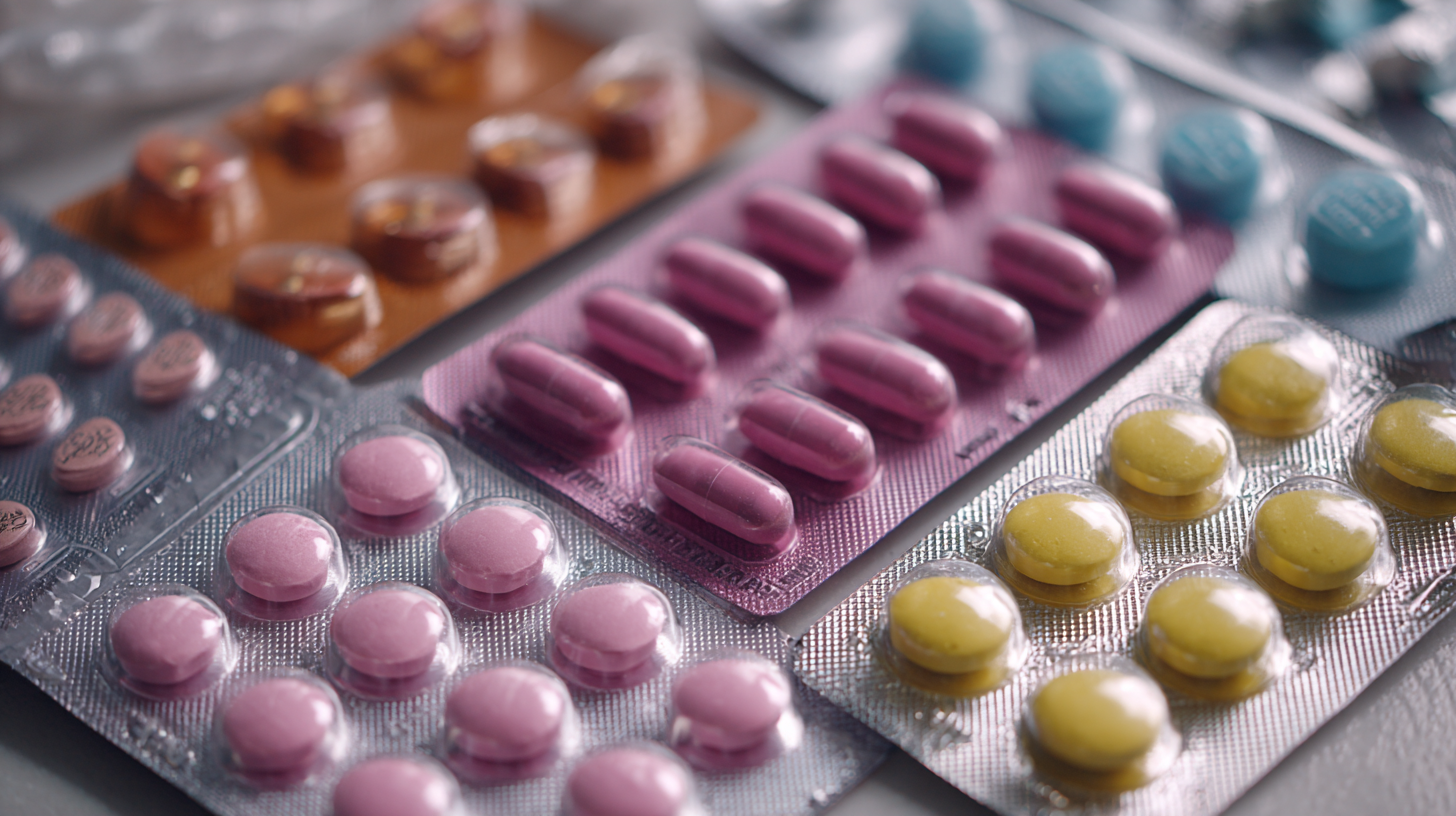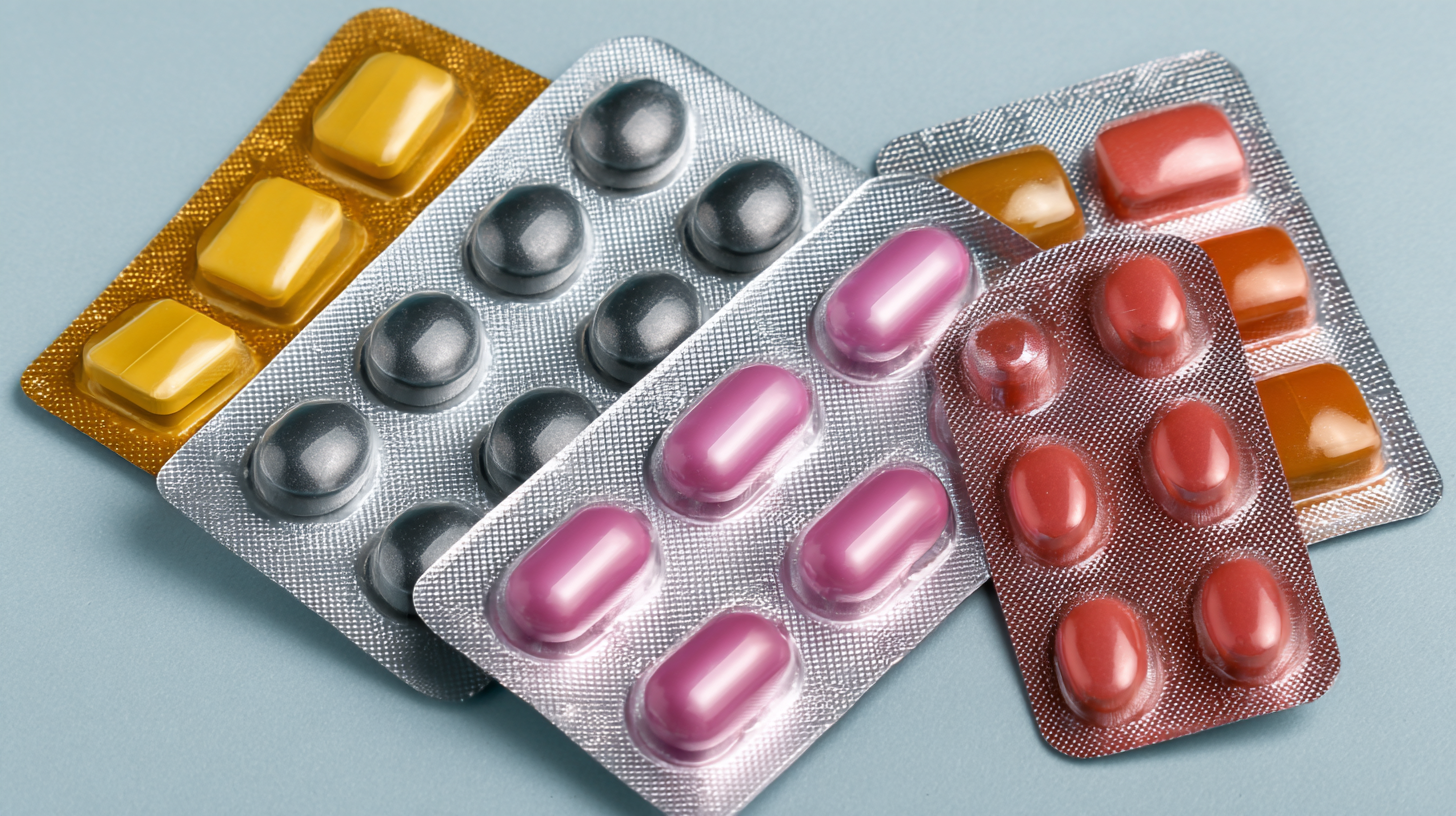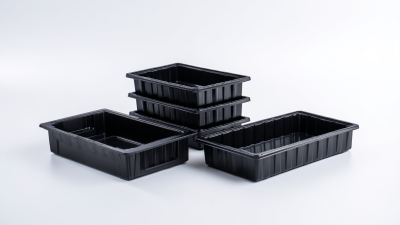How to Choose the Right Blister Packs for Your Products
Choosing the right blister packs for your products is a critical decision that can significantly impact not only the protection and presentation of your items but also customer satisfaction and brand perception. Blister packs, which are widely used for packaging pharmaceuticals, consumer goods, and electronics, offer unique advantages such as visibility, tamper resistance, and ease of use. However, with various types and materials available, selecting the most suitable blister pack can be daunting. Factors such as product dimensions, shelf life, and branding requirements play a vital role in making an informed choice. This introduction aims to explore the essential considerations when selecting blister packs to ensure that your products stand out in the marketplace while meeting industry standards and consumer expectations.

Understanding the Different Types of Blister Packs for Packaging Needs
When selecting the appropriate blister packs for your products, understanding the various types available in the packaging market is crucial. The global pharmaceutical blister packaging market is projected to grow significantly, reaching approximately USD 45.46 billion by 2034, up from USD 21.75 billion in 2024, reflecting a robust growth trajectory of about 16.39% CAGR (Custom Market Insights). This growth is propelled by the increasing need for effective and secure packaging solutions in the pharmaceutical sector.
Different blister pack types offer distinct advantages depending on the product's requirements. For instance, materials like HDPE and PET are commonly used for their durability and protective qualities. Recent studies evaluating the environmental life cycle of nutraceutical packaging indicated that blister packs can minimize product waste and enhance longevity compared to traditional bottle packaging.
Tips: When choosing blister packs, consider the product's sensitivity to moisture and light exposure. Opt for materials that provide maximum protection for your specific product type. Additionally, prioritize sustainability by selecting packaging that has a lower environmental impact, which is increasingly valued in today's market.
Evaluating Material Options for Optimal Product Protection
When selecting blister packs for your products, evaluating the material options is crucial for ensuring optimal protection and longevity. Different materials offer varying levels of barrier properties, resistance to physical damage, and compatibility with the product being packaged. For instance, PVC (polyvinyl chloride) is commonly used due to its excellent clarity and ability to form complex shapes, making it suitable for a variety of products. However, it may not provide enough moisture and oxygen barrier for certain sensitive items.
On the other hand, materials like PET (polyethylene terephthalate) and HDPE (high-density polyethylene) could offer superior recycling capabilities and better resistance to environmental factors, which can be pivotal for products that require extended shelf life. Additionally, combining materials, such as using a sealable film with a rigid backing, can enhance both protection and aesthetic appeal. Ultimately, understanding the specific requirements of your products will guide you in selecting the right blister pack material that not only preserves functionality but also aligns with sustainability goals.
How to Choose the Right Blister Packs for Your Products - Evaluating Material Options for Optimal Product Protection
| Material Type | Benefits | Limitations | Best Use Cases |
|---|---|---|---|
| PVC (Polyvinyl Chloride) | Good clarity and product visibility; Cost-effective | Less environmental friendly; Lower barrier properties | Pharmaceuticals, small electronics |
| PET (Polyethylene Terephthalate) | Excellent clarity; Better environmental profile than PVC | Cost can be higher; Requires specific sealing conditions | Food packaging, cosmetics |
| ALU (Aluminum) | Exceptional barrier properties; Protects against light, moisture, and oxygen | Less visibility; Can be more expensive | Pharmaceuticals, sensitive products |
| PP (Polypropylene) | Good chemical resistance; Suitable for sterilization | Lower clarity; May have reduced formability | Medical devices, sterile products |
| PVDC (Polyvinylidene Chloride) | High gas barrier properties; Excellent moisture resistance | More expensive; Environmental concerns | Food industry, long shelf-life products |
Assessing Blister Pack Design for User Experience and Branding
When selecting blister packs, the design plays a crucial role in enhancing user experience and reinforcing branding. According to a report by Smithers Pira, nearly 70% of consumers make judgments about product quality based on packaging alone. This statistic highlights the importance of effective blister pack design, which not only protects the product but also serves as a vital touchpoint for brand engagement. Customizing designs that reflect brand values through colors, shapes, and materials can significantly impact consumer perception and loyalty.
Moreover, user accessibility should be a key consideration in blister pack design. A study conducted by the Institute of Packaging Professionals revealed that nearly 30% of customers have difficulty opening traditional blister packs, leading to frustration and a negative user experience. Implementing user-friendly features such as easy-peel apertures or tearable sections can enhance usability, ensuring that the packaging aligns with the consumer's needs. Brands that prioritize both aesthetics and functionality in blister design not only improve customer satisfaction but also establish a stronger market presence.
Key Considerations for Production and Cost Management in Blister Packaging
When selecting the right blister packs for your products, effective production and cost management are paramount. One key consideration is the material used for the blister packs. Different materials offer varying levels of protection, durability, and visibility for the product inside, which can influence both production costs and consumer appeal. Evaluating options such as PVC, PET, and aluminum is essential; while some materials might offer lower initial costs, they could also lead to higher shipping and storage fees due to weight or fragility.

Another important factor is the design of the blister pack itself. Custom shapes and sizes can cater to specific product requirements, but they may also increase production time and costs. It's crucial to find a balance between an eye-catching design that enhances product appeal and a streamlined manufacturing process that minimizes waste and costs. Additionally, collaborating with your packaging supplier to assess tooling and setup costs can lead to more efficient production and ultimately a healthier bottom line. Efficient planning and thoughtful design choices can significantly impact both your packaging effectiveness and overall profitability.
Regulatory Compliance and Safety Standards for Blister Pack Selection
When selecting blister packs for your products, regulatory compliance and safety standards are paramount considerations. Different industries, such as pharmaceuticals, food, and consumer goods, are governed by specific regulations that dictate the materials and manufacturing processes used in packaging. For instance, in the pharmaceutical sector, adherence to the FDA guidelines is crucial to ensure that the packaging effectively protects the integrity of the medication while preventing contamination. Not only does this facilitate the safety of the end-user, but it also helps companies avoid costly recalls and legal implications.
In addition to regulatory norms, safety standards play a critical role in blister pack selection. It is essential to consider factors such as child resistance, tamper evidence, and material safety. Blister packs must be constructed from substances that are non-toxic and compliant with safety regulations, particularly when they come in contact with food or medical products. Manufacturers should also evaluate the sustainability of their materials to meet environmental standards, as consumer demand for eco-friendly packaging continues to rise. Ultimately, prioritizing regulatory compliance and safety standards not only ensures legal adherence but also builds trust with consumers.

Related Posts
-

How to Choose the Right Stock Blister Packaging for Your Products
-

Essential Checklist for Choosing the Right Plastic Clamshells for Your Products
-

How to Choose the Right Shipping Trays for Your Business Needs
-

What is the Importance of Blister Packaging Machine in Modern Manufacturing
-

How to Optimize Your Blister Card Packaging for Enhanced Product Visibility and Sales Performance
-

Ultimate Checklist for Optimizing Your Thermoforming Plastic Production Process
